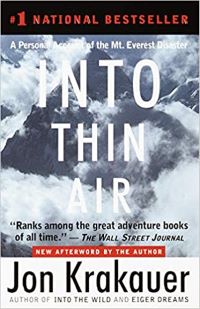
This is the book that began my fascination with epic disasters in cold, icy places. I guess I wanted to understand why people risk their lives for adventure or exploration, which I admit I still don’t understand after reading dozens of books like this. But I keep reading them, just as drawn into the snowy, freezing landscapes as the mindset of these men and women who choose to go to the ends (and tops) of the world. What drives them? How do they explain themselves to family? How do they feel afterwards? And, always, what is the truth? Is there a truth? After reading Into Thin Air, I read The Climb by Anatoli Boukreev, which is about the same disaster on Mt. Everest, but with a different point-of-view. Boukreev at times contradicts Krakauer’s story. (He died in 1997 in an avalanche while climbing Annapurna in Nepal.) There are also other accounts of this particular Everest disaster (many other disasters have taken place on Everest, and still do today), each as riveting as the last. Left For Dead by Beck Weathers, and No Shortcuts to the Top: Climbing the World’s 14 Highest Peaks by Ed Viesturs are also well worth the read. There may not be any answers to the why, and to what really happened, but each story, each perspective, is equally fascinating.
